From an insurance buyer’s perspective, understanding the dynamics of the insurance market is crucial. You may have noticed that premium prices can fluctuate, seemingly on a whim. However, the truth is that the insurance market operates in cycles, shifting between soft and hard markets. In this blog post, we aim to demystify these concepts and provide guidance on how to navigate a hard insurance market effectively.
Soft Markets: A Buyer’s Market
Let’s start with soft markets, often referred to as buyer’s markets. During a soft market, insurance buyers enjoy stable premiums, broader coverage terms, increased capacity, higher available limits, and healthy competition among insurance carriers for new business. This favorable market environment allows businesses to secure coverage at reasonable rates while benefiting from broader protection.
Hard Markets: A Seller’s Market
On the other hand, hard markets, also known as seller’s markets, present a different set of challenges. During a hard market, insurance premiums increase, underwriting appetite and capacity diminish, coverage becomes more restrictive, and competition among insurance carriers for new business decreases. As a result, insurance buyers face tough choices regarding their insurance coverage.
Factors Contributing to a Hardening Market
Several factors contribute to a hardening insurance market. Understanding these factors can shed light on the reasons behind premium increases and coverage restrictions. Here are some common contributors:
- Catastrophic losses: Increasingly frequent and devastating disasters such as floods, hurricanes, and wildfires have led to significant losses for insurers. As a result, the overall cost of coverage has risen.
- Claims costs: Both the frequency and severity of claims have been on the rise. Settlement verdicts for bodily injury claims are increasing, leading to higher costs to defend claims. Advances in healthcare have also extended treatment and improved survival rates, impacting compensatory damages and benefits.
- Underwriting standards: Underwriting losses have been a challenge for insurers, especially given the prolonged low-interest-rate environment. This cautious approach has led many carriers to restrict the classes of businesses and lines of insurance they are willing to underwrite.
- Investment returns: Insurance carriers typically invest premiums in other markets to generate returns. However, reduced interest rates have negatively impacted profitability, causing carriers to reduce their risk appetite.
- Reinsurance costs: Reinsurance, which provides coverage for insurance companies, has become more expensive. As reinsurance costs rise, insurance carriers adjust their rates accordingly.
Responding to a Hard Market
When faced with a hard insurance market, businesses can take proactive steps to navigate the changing landscape. Here are some strategies to consider:
- Review your insurance program: Ensure your policies adequately address your business’s key exposures. Adjustments may be necessary, but they should not compromise the coverage you need.
- Strengthen risk management efforts: Enhance your risk management practices to make your business more attractive to insurers. Working with your insurance broker, review existing policies and procedures and implement suggestions for favorable quotes.
- Understand your loss history: Underwriters scrutinize loss trends during a hard market. Be prepared to explain specific losses and demonstrate the steps taken to mitigate future risks.
- Budget wisely and plan ahead: Recognize that premium increases may be unavoidable. Include insurance costs in your budget and factor them into your overall financial planning.
- Choose the right insurance broker: Partner with a competent insurance professional who has strong carrier relationships and industry knowledge. A skilled broker can guide you through the complexities of a hard market.
- Maintain open communication with your broker: Start the renewal process early and engage in regular discussions with your broker to assess how the hard market will impact your business. Early planning allows your broker more time to secure the best coverage for your needs.
By addressing risk, controlling losses, and managing exposures, businesses can better navigate a hard insurance market and make informed decisions about their coverage.
For more information on navigating a hard insurance market, check out our related blog post. You can also contact us at 1-830-303-8300 or visit our website for personalized assistance.


